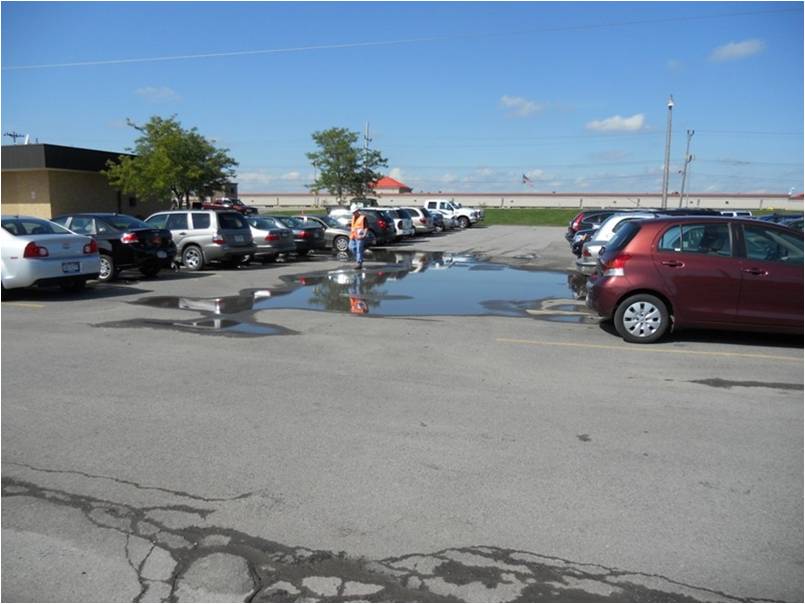Inspectable Item: Parking Lots/Driveways/Roads
Notes

But- with only one trip hazard present, parking lots, driveways, and roads can be cited at Level 3.
And, at this point you will also be cited for Trip Hazards.
If streets and/or sidewalks belong to the city, county, or other governmental agency, the should not be inspected at all.

The rest is long term capital planning. You don't (reasonably) repave your paved areas just because you have a REAC inspection coming up.
Ponding?
It takes a inch or more of water standing over 100 square feet of your parking lots, driveways, and roads for this to be cited.
| Parking Lots/Driveways/Roads (Site) |
| An area for parking motorized vehicles begins at the curbside and includes all parking lots, driveways or roads within the property lines that are under the control of the housing provider. |
| This inspectable item can have the following deficiencies: |
| Cracks/Settlement/Heaving/Loose Materials/Potholes |
| Ponding |
| Cracks/Settlement/Heaving/Loose Materials/Potholes (Parking Lots/Driveways/Roads—Site) |
| Deficiency: There are visible faults in the pavement: longitudinal, lateral, alligator, etc. The pavement sinks or rises because of the failure of sub-base materials. |
| Note: |
| 1. Do not include cracks on walkways/steps. |
| 2. For this to be a Level 2 deficiency, more than 10% of the area must be impacted, for example, 100 out of 1,000 square feet. The 10% level does not apply to Level 3 conditions. |
| 3. Relief joints are there by design; do not consider them cracks. |
| 4. Repaired/sealed cracks should not be considered a deficiency. |
| 5. When observing traffic ability, consider the capacity to support people on foot, in wheelchairs, and using walkers or canes, etc., and the potential for problems and hazards. |
| Level of Deficiency: |
| - Level 1: N/A |
| - Level 2: Damaged pavement as defined above greater than 3/4 inch, cracks, settlement, hinging/tilting, loose materials, pot holes, or missing section(s) that affect traffic ability over more than 10% of the property's parking lots/driveways/roads. Note a deficiency if you see cracks on more than 10% of the paved area. |
| - Level 3: Damaged pavement as defined above has made a parking lot/driveway unusable/impassable or creates unsafe conditions for pedestrians and vehicles. |
| Comment: |
| - Level 2: If the height differential is greater than3/4inch, consider this a safety hazard. If the condition of the surface could cause tripping or falling, you must manually record this deficiency under “Hazards (Health and Safety).” |
| Ponding (Parking Lots/Driveways/Roads—Site) |
| Deficiency: Water or ice has accumulated in a depression on an otherwise flat plane. |
| Note: |
| 1. Consider the impact of any measurable precipitation, 1/10 inch or more, during the last 48 hours. Note the deficiency only if there is clear evidence that the ponding is a persistent or long-standing problem. |
| 2. For parking lots/driveways/roads only, note a deficiency if you see ponding on more than 5% of the paved area. |
| Level of Deficiency: |
| - Level 1: N/A |
| - Level 2: Between 1 and 3 inches of water has accumulated, affecting the use of 5% or more of a parking lot/driveway/road. The parking lot/driveway/road is passable. |
| - Level 3: More than 3 inches of water has accumulated making 5% or more of a parking lot/driveway/road unusable or unsafe. |